Complete Solutions to Example of chapter REFRACTION OF LIGHT of Class 12 book with complete answers and questions
| Class 12 | PHYSICS |
| Chapter | REFRACTION OF LIGHT |
| DC PANDEY | Example |
| Number Of Questions | 36 |
| Academic Year | 2023-24 |
Find the speed of light of wavelength `lambda =780nm` (in air) in a medium of refractive index `mu=1.55.`
(b) What is the wavelength of this light in the given medium ?
View SolutionRefractive index of glass with respect to water is `(9//8)`.
Refractive index of glass with respect to air is `(3//2)`. find the refractive index of water with respect to air .
View SolutionA ray of light passes through two slabs of same thickness. In the first slab `n_(1)` waves are formed and in the second slab `n_2`. Find refractive `
` index of second medium with respect to first.
View SolutionA light beam, passes from medium 1 to medium 2. Show that the emerging beam is parallel to the incident beam.
View SolutionA ray of light falls on a glass plate of refractive index `mu=1.5`.
What is the angle of incidence of the ray if the angle between the reflected and
refracted rays is `90^@`?
View SolutionA pile 4m high driven into the bottom of a lake is 1m above the `
`water . Determine the length of the shadow of the pile on the bottom of the lake if `
` the sun rays make an angle of `45^@` with the water surface . The refractive index`
` if water is `4/3`. `
View SolutionAn observer can see through a pin-hole the top end of a thin rod of height h, placed as shown in the figure. The beaker height is 3h and its radius h. When the beaker is filled with a liquid up to a height 2h, he can see the lower end of the rod. Then the refractive index of the liquid is
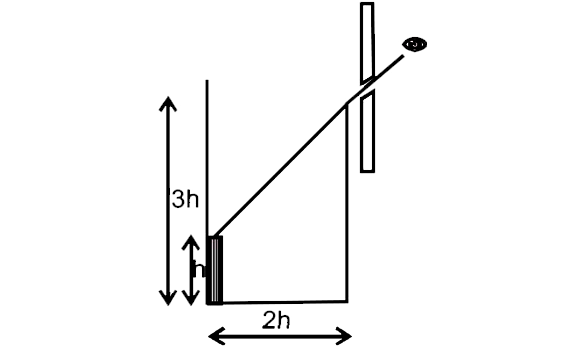
View SolutionIn Fig, find position of second image `I_2` formed after two times refraction from two place surfaces AB and CD.
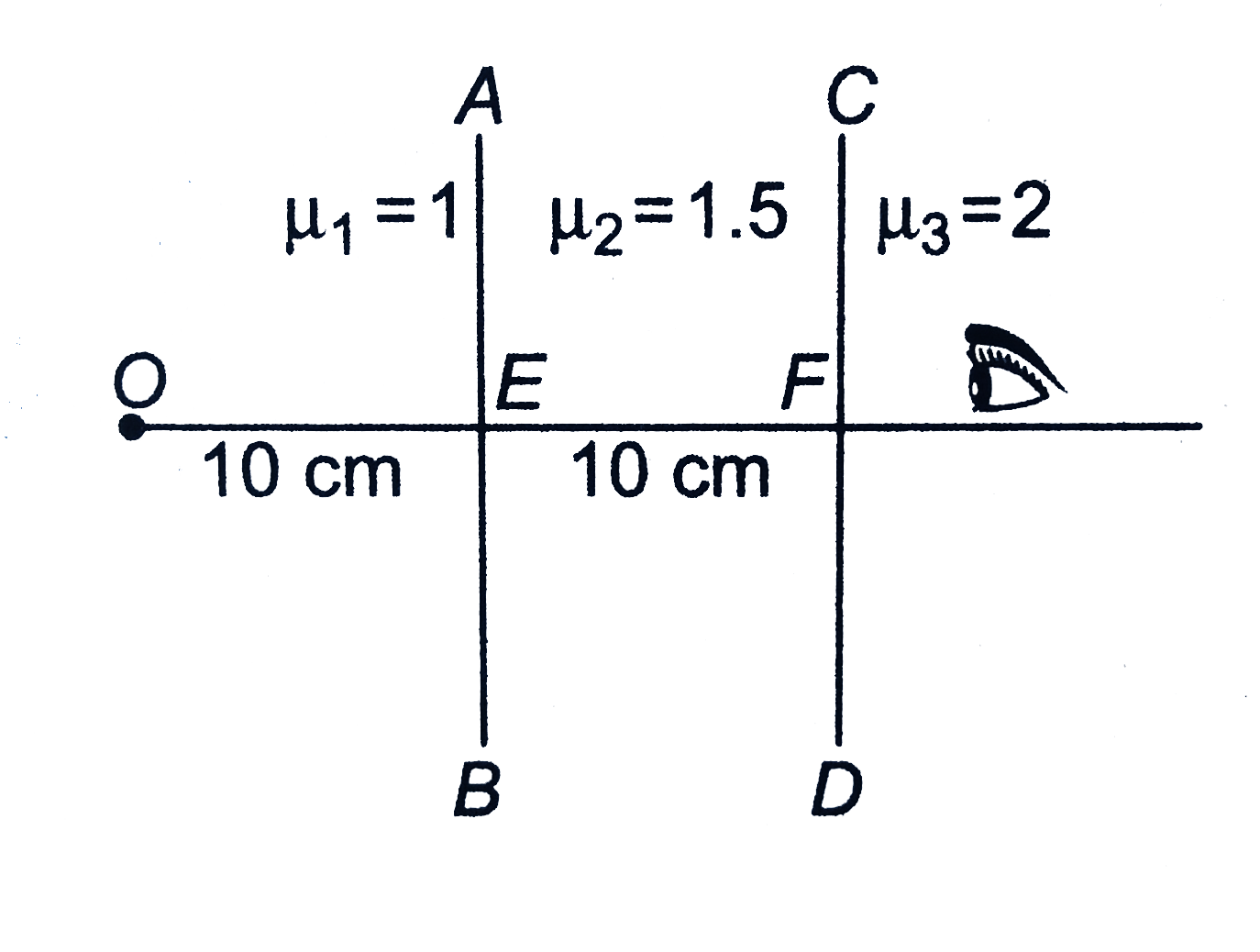
View SolutionRefractive index of the glass slab is `1.5.` There is a point object `O` inside the slab as shown. To eye`E_1` object appears at a distance of `6cm` (From the top surface) and to eye `E_2` it appears at a distance of `8cm` (from the bottom surface). Find thickness of teh glass slab.
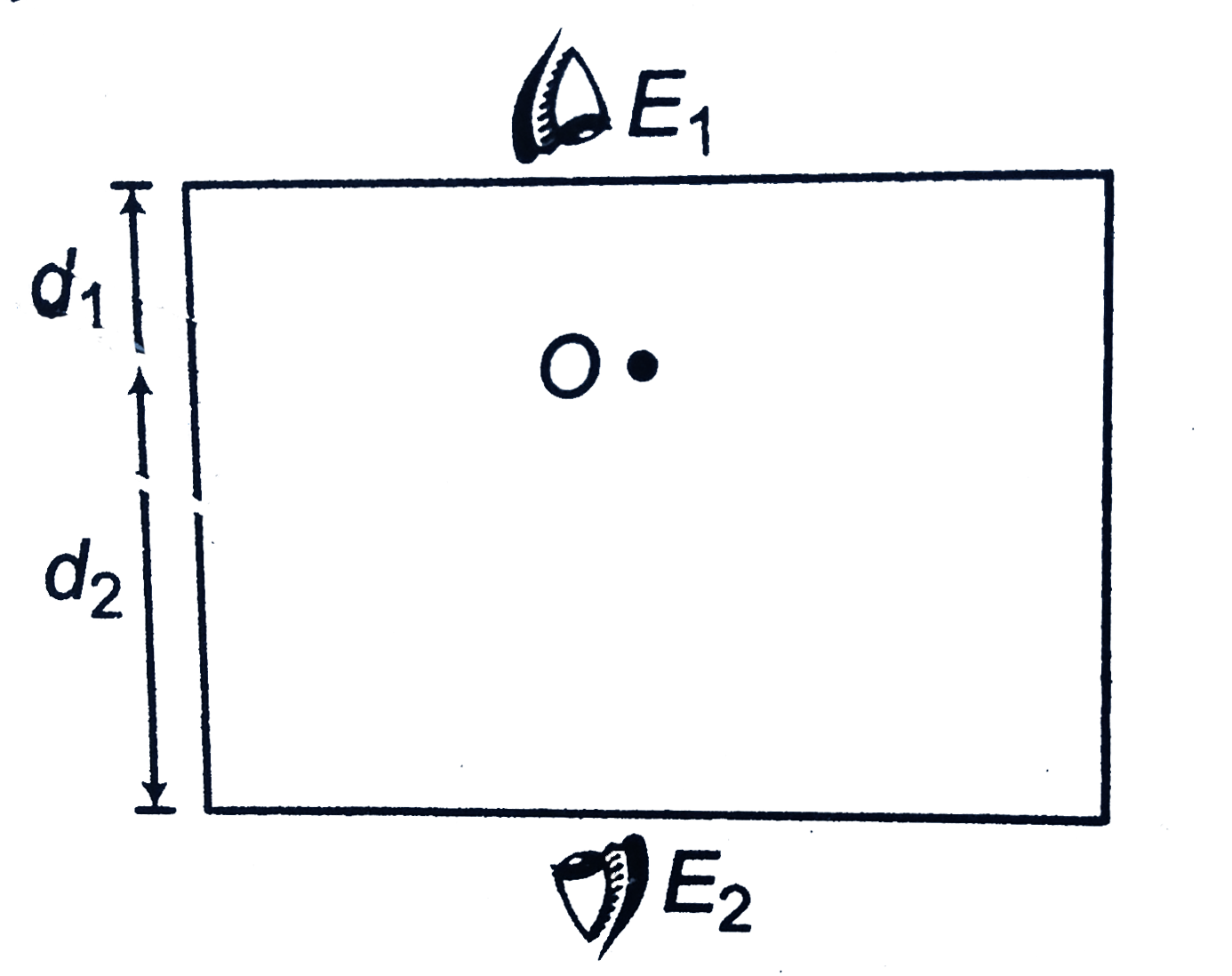
View SolutionRefractive index of glass slab shown in figure is `1.5.` Focal length of mirror is `20cm`. Find
(a) total number of reflections before final image is formed.
(b) reduced steps.
(c) value of x, so that final image coincides with the object.
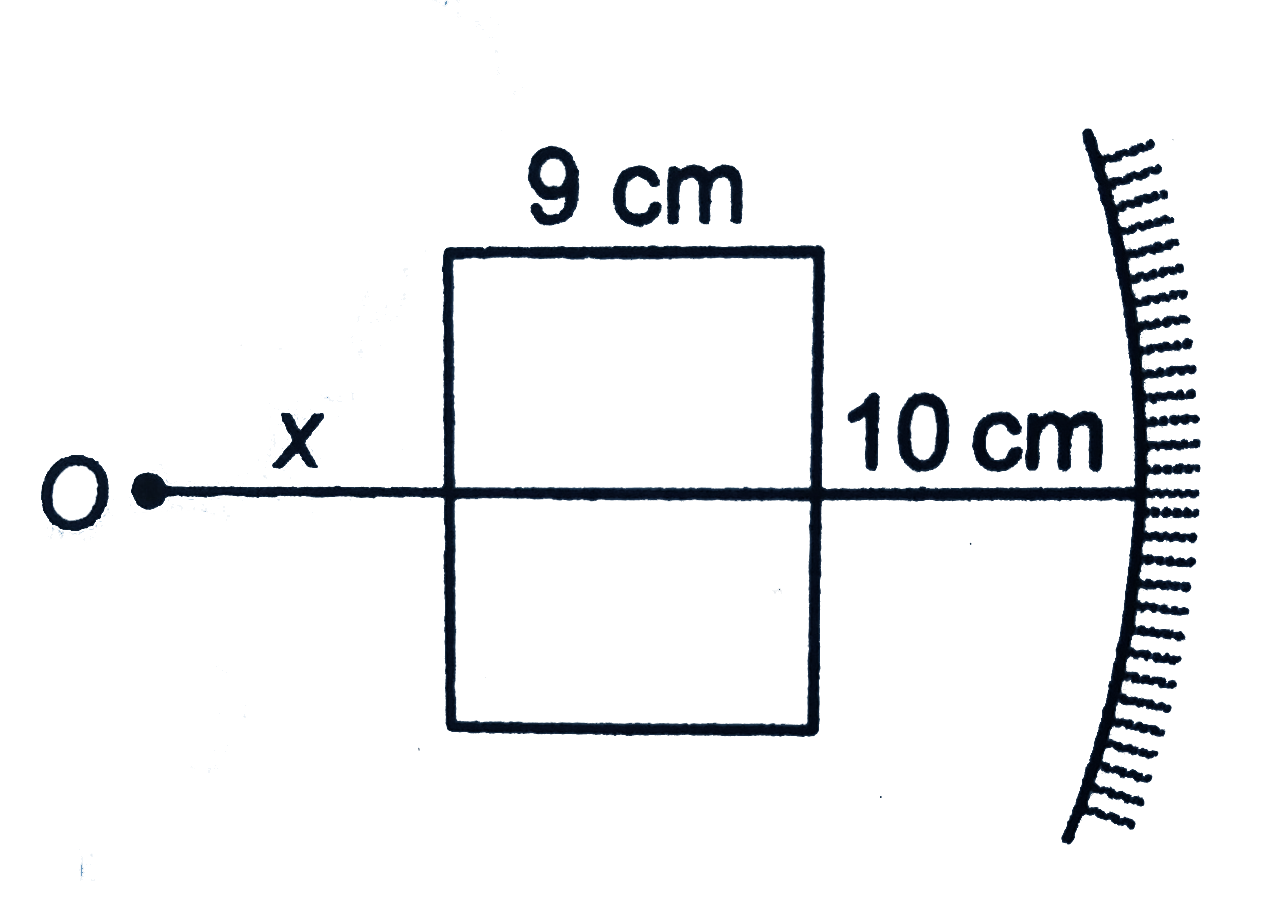
View SolutionA point object O is placed in front of a concave mirror of focal length 10cm. A glass slab of refractive index `mu=3//2` and thickness 6cm is inserted between the object and mirror.
Find the position of final image when the distance x shown in Fig... is, (a) 5cm and (b) 20 cm.
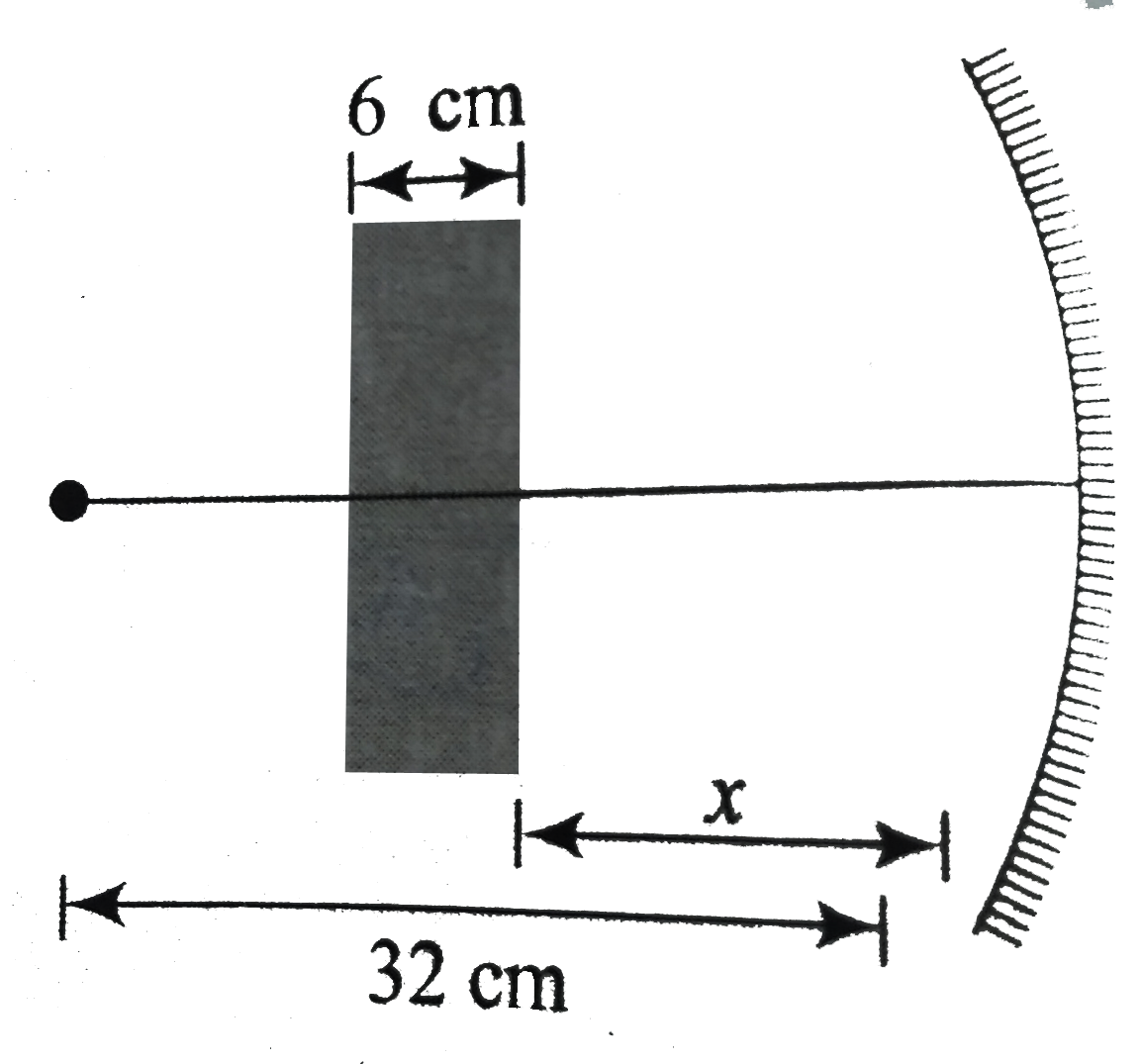
View SolutionA glass sphere of radius `R=10cm` is kept inside water. A point object O is placed at `20cm` from A as shown in figure. Find the position and nature of the image when seen from other side of the sphere. Also draw the ray diagram. Given, `mu_g=3//2` and `mu_w=4//3`
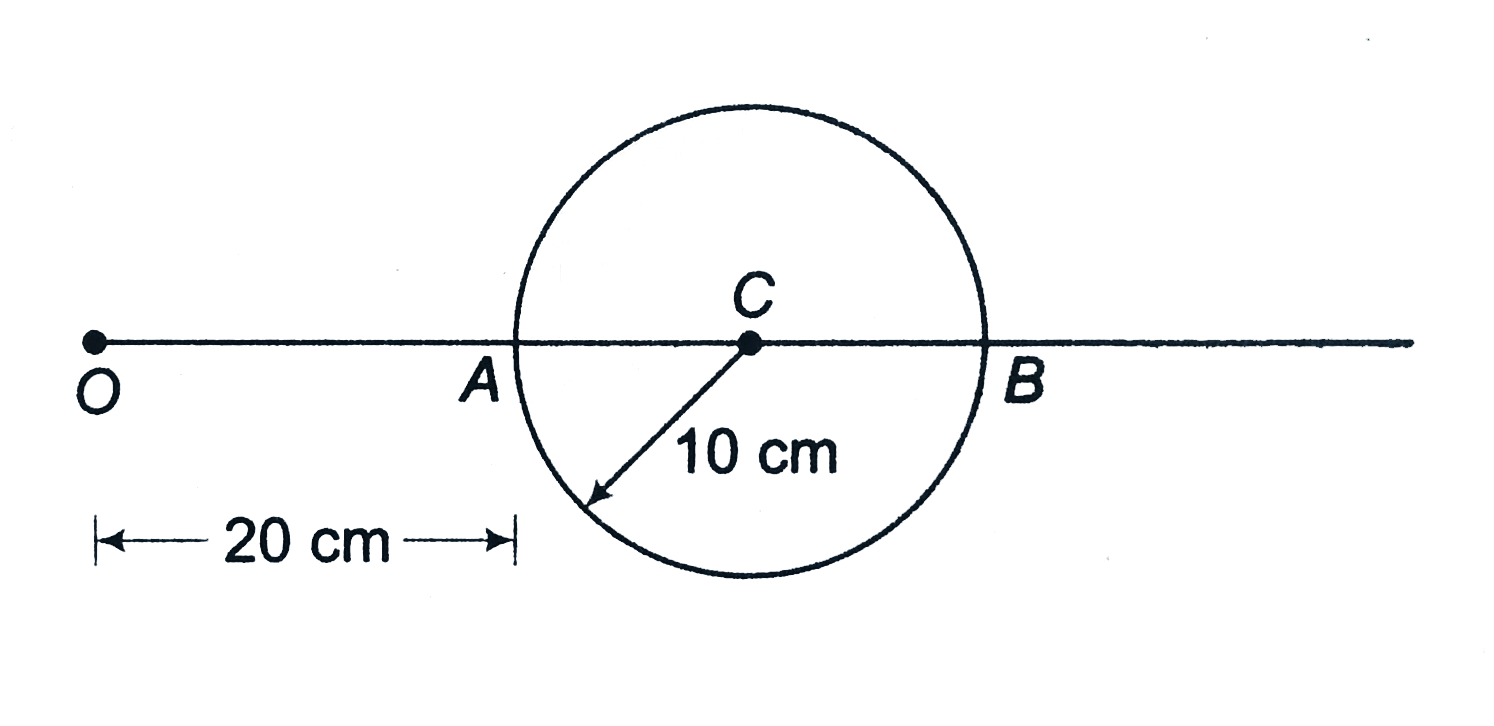
View SolutionA convex lens of power `2 D` and a concave lens of focal length
`40cm`are kept in contact, find
(a) Power of combination , (b) Equivalent focal length
View SolutionA converging lens of focal length `5.0cm` is placed in contact
with a diverging lens of focal length `10.0cm.` Find the combined focal length of
the system.
View Solution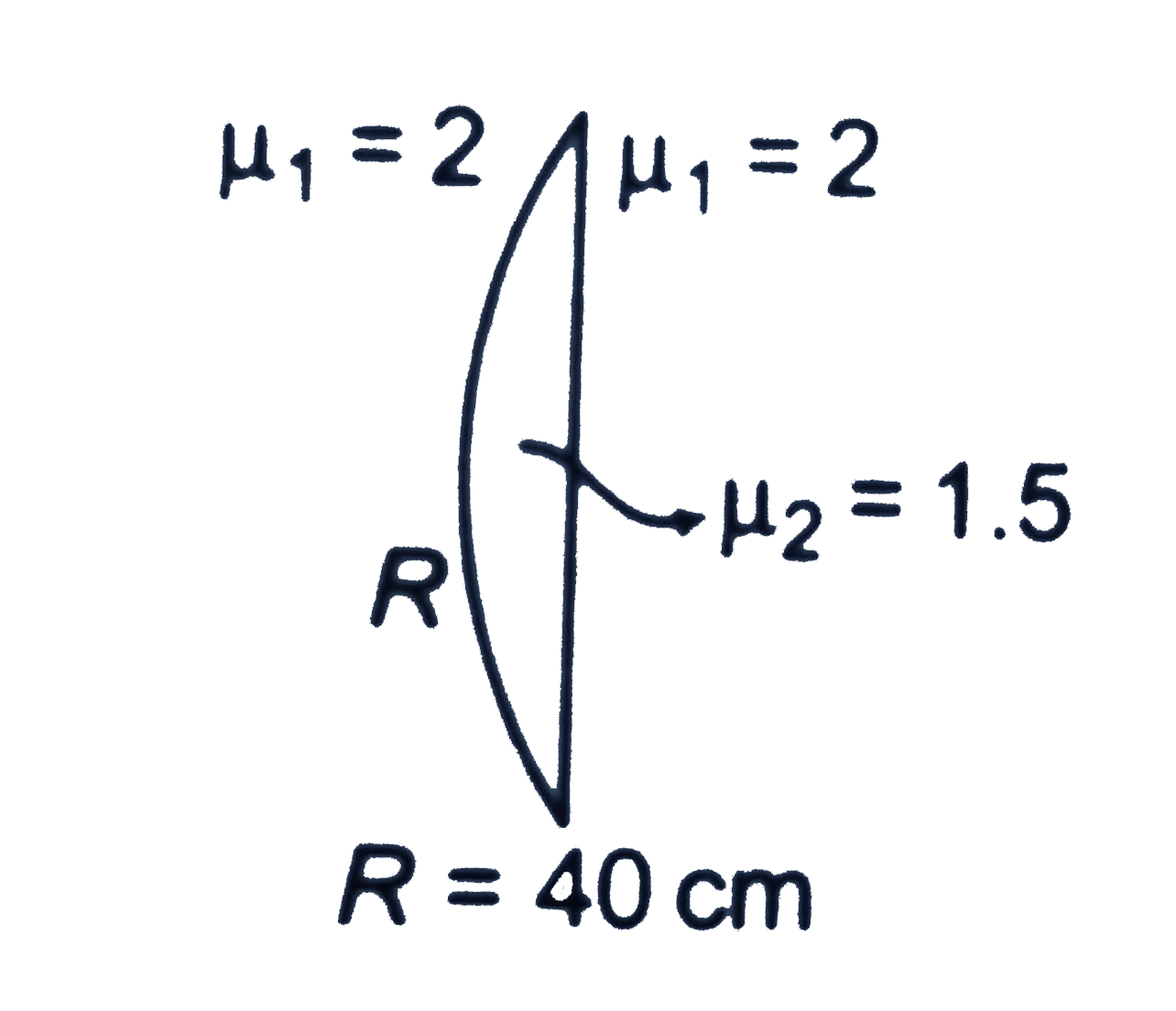
Find focal length of the system shown in figure from left hand side.
View SolutionFocal length of a convex lense in air is `10cm`. Find its focal
length in water. Given that `mu_g=3//2` and `mu_w=4//3`.
View SolutionA biconvex lens `(mu=1.5)` has radius of curvature `20cm` (both).
find its focal length.
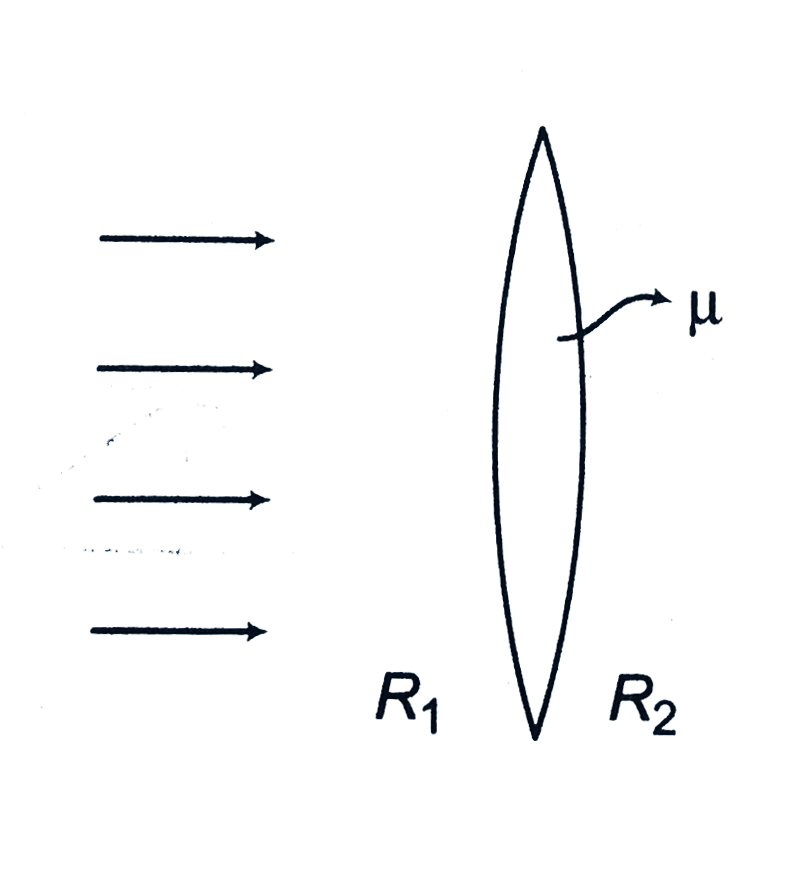
View SolutionFind distanace of image from a convex lens of focal length
`20cm` if object is placed at a distance of `30cm` from the lens. Also find its
magnification.
View SolutionFind the distance of an object from a convex lens if image is
two times magnified. Focal length of the lens is `10cm`
View SolutionUnder what condition, a concave lens can make a real image.
View SolutionAn image I is formed of point object O by a lens whose optic axis is AB as shown in figure.

(a) State whether it is a convex lens or concave?
(b) Draw a ray diagram to locate the lens and its focus.
View SolutionFocal length of a convex lens in air is `20cm.` and of concave lens 40cm. Find the position of final image.
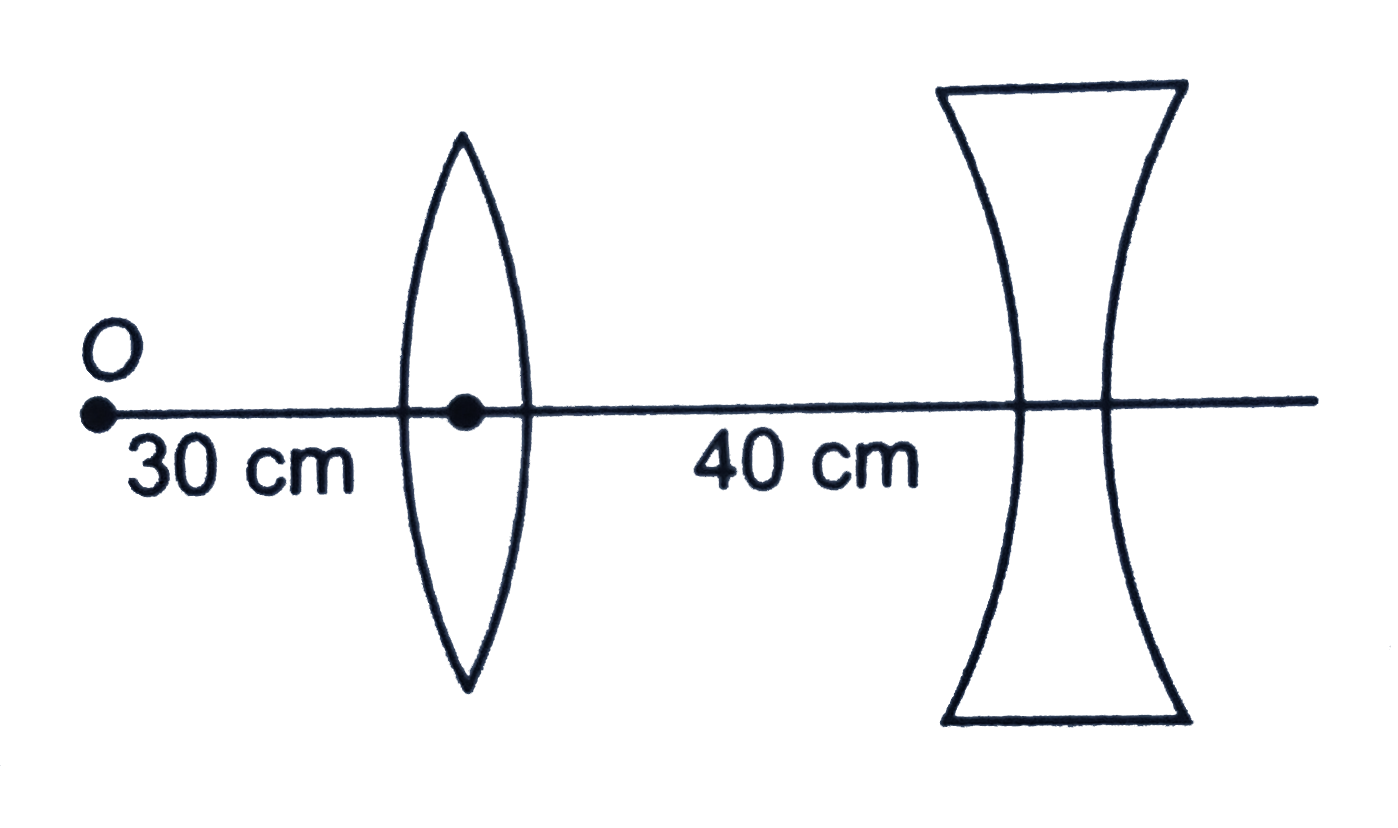
View SolutionFocal length of the convex lens shown in figure is `20cm.` Find the image position and image velocity.
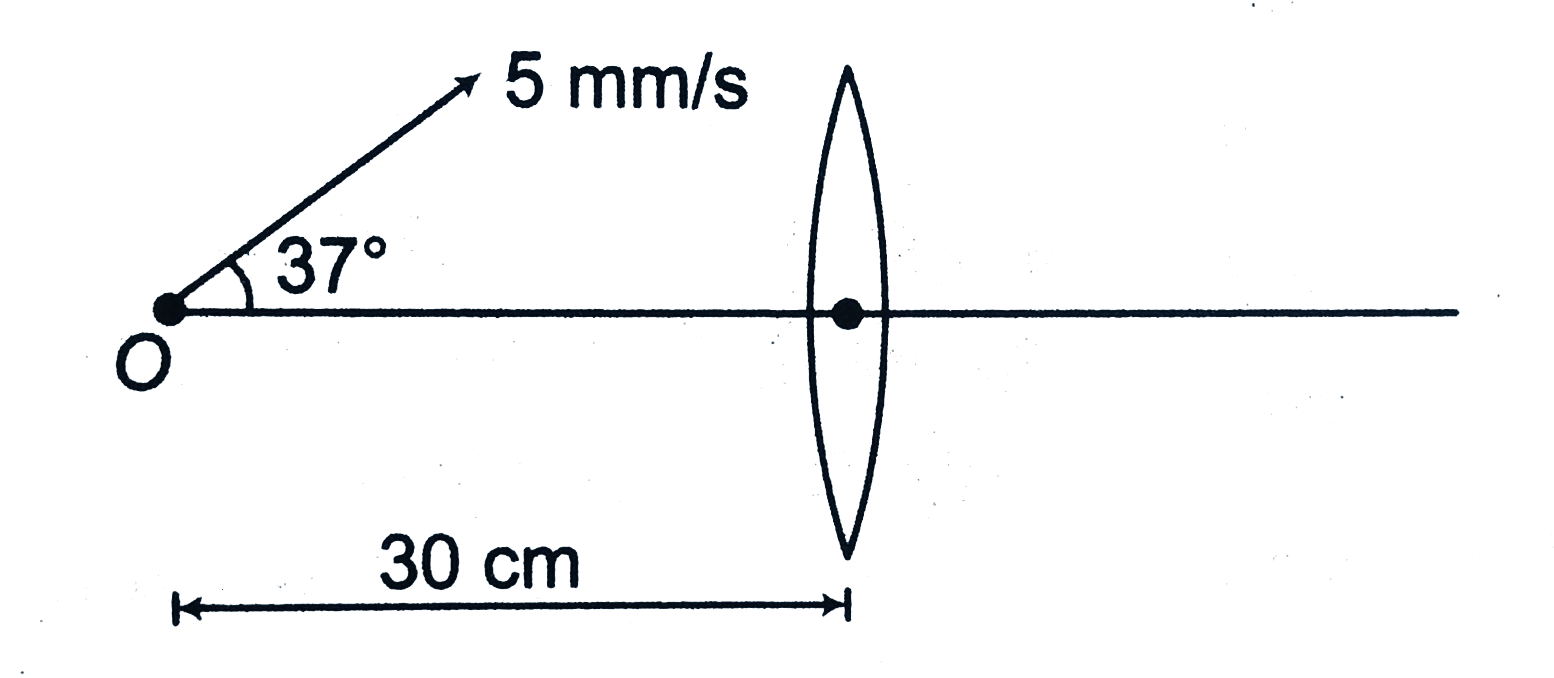
View SolutionFocal length of concave lens shown in figure is 60 cm. Find image position and its magnification.

View SolutionAn isotropic point source is placed at a depth h below the water surface. A floating opaque disc is placed on the surface of water so that the source is not visible from the surface. What is the minimum radius of the disc? Take refractive index of `"water"=mu`.
View SolutionA point source of light is placed at a distance h below the surface of a large and deep lake. Show that the fraction f of light that escape directly from water surface is independent of h and is given by
`f=[[1-sqrt(1-1//mu^2)])/2`
View SolutionIn the figure shown, `mu_1gtmu_2.` Find minimum value of i so that TIR never takes place at P.
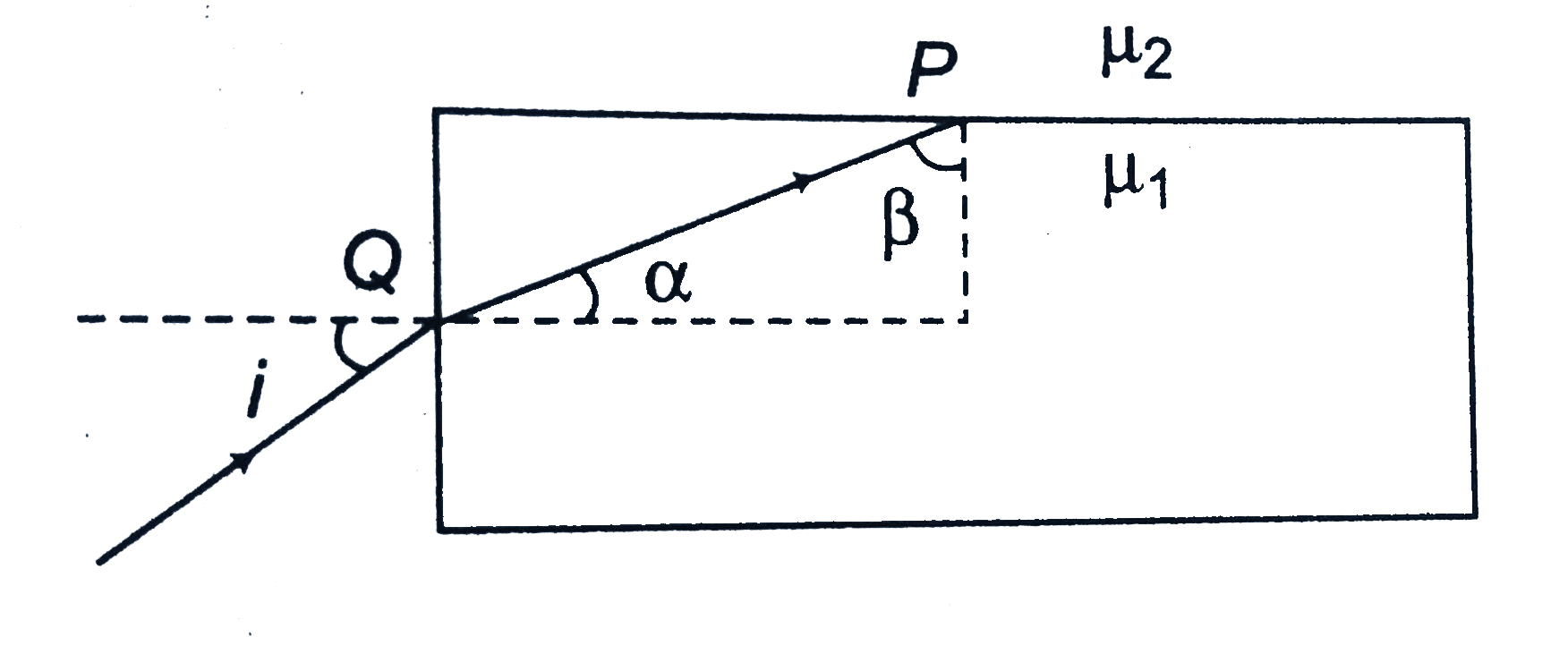
View SolutionMonochramatic light is incident on the pLane interface AB between two media of refractive indices `mu_1` and `mu_2(mu_2gtmu_1)` at an angle of incidence theta as shown in figure. The angle theta is infinitesimally greater thannte critical angle for the two media so thast total internal reflection takes place. Now, if a transparent slab DEFG of uniform thickness and of refractive inde `mu_2` is introduced on theinterface (as shown in figure ) , show that for any value of `mu_2` all light will ultimately be reflected back into medium II.
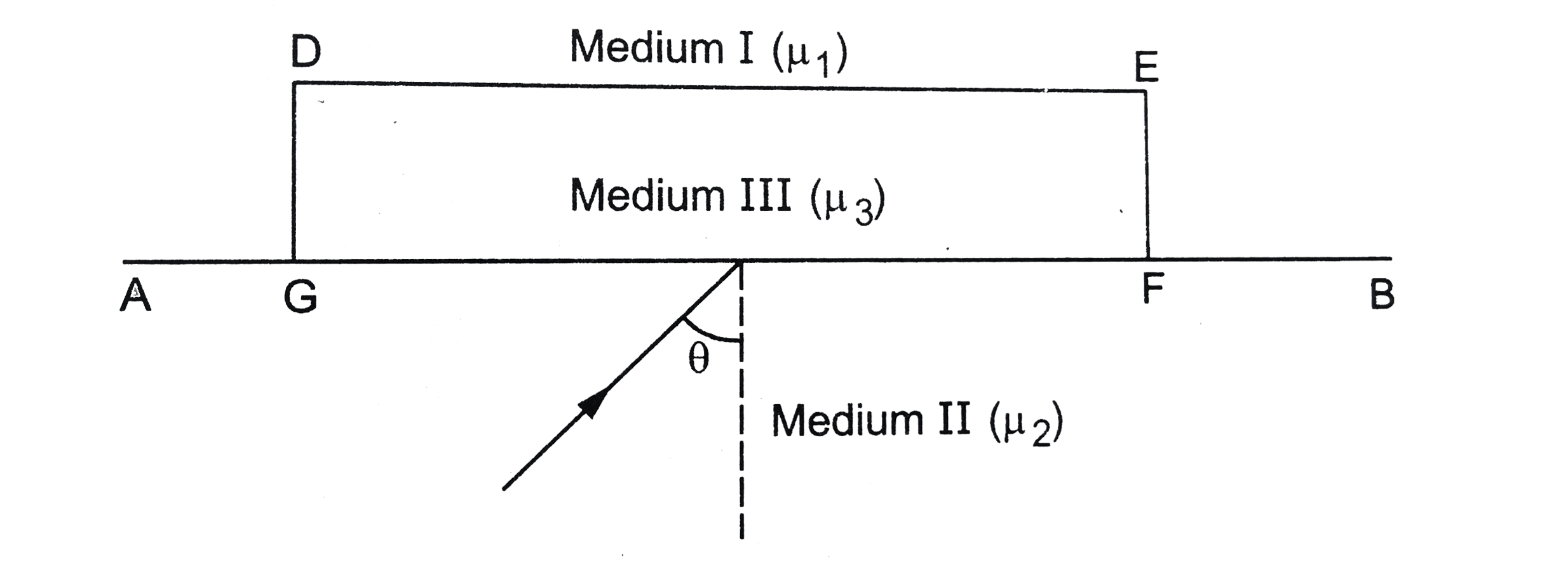
View SolutionA right angled prism is to be made by selecting a proper material and the angles A and B `(BleA), as shown in figure. It is desired that a ray of light incident on the face AB emerges parallel to the incident direction after two internal reflections.
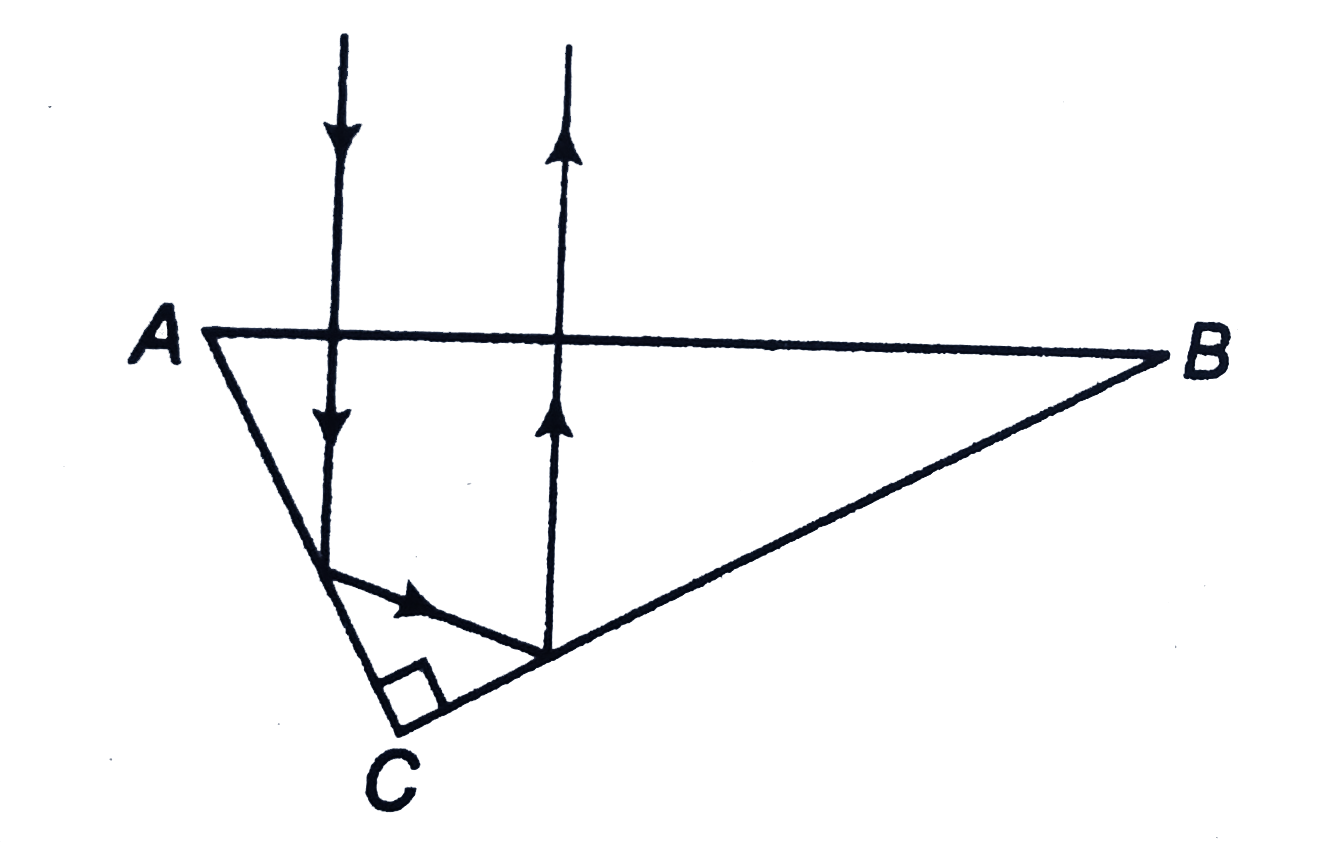
(a) What should be the minimum refractive index n for this to be possible?
(b) For `n=5/3` is it possible to achieve this with the angle B equal to `30` degrees?
View SolutionA prism ABC of angle `30^(@)` has its face AC silvered. A ray of light incident at an angle of `45^(@)` at the face AB retraces its path after refraction at face AB and reflection at face AC . The refractive index of the material of the prism is
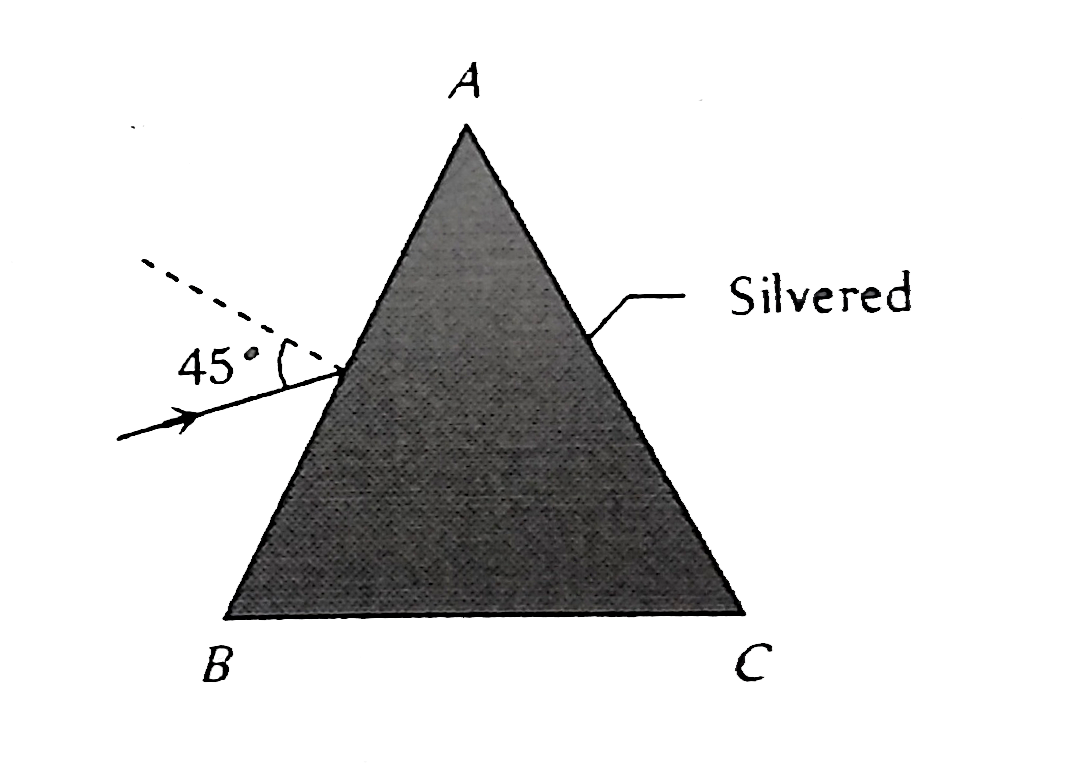
View SolutionIn the shown figure, mirror is rotated by an angle theta. Find theta if
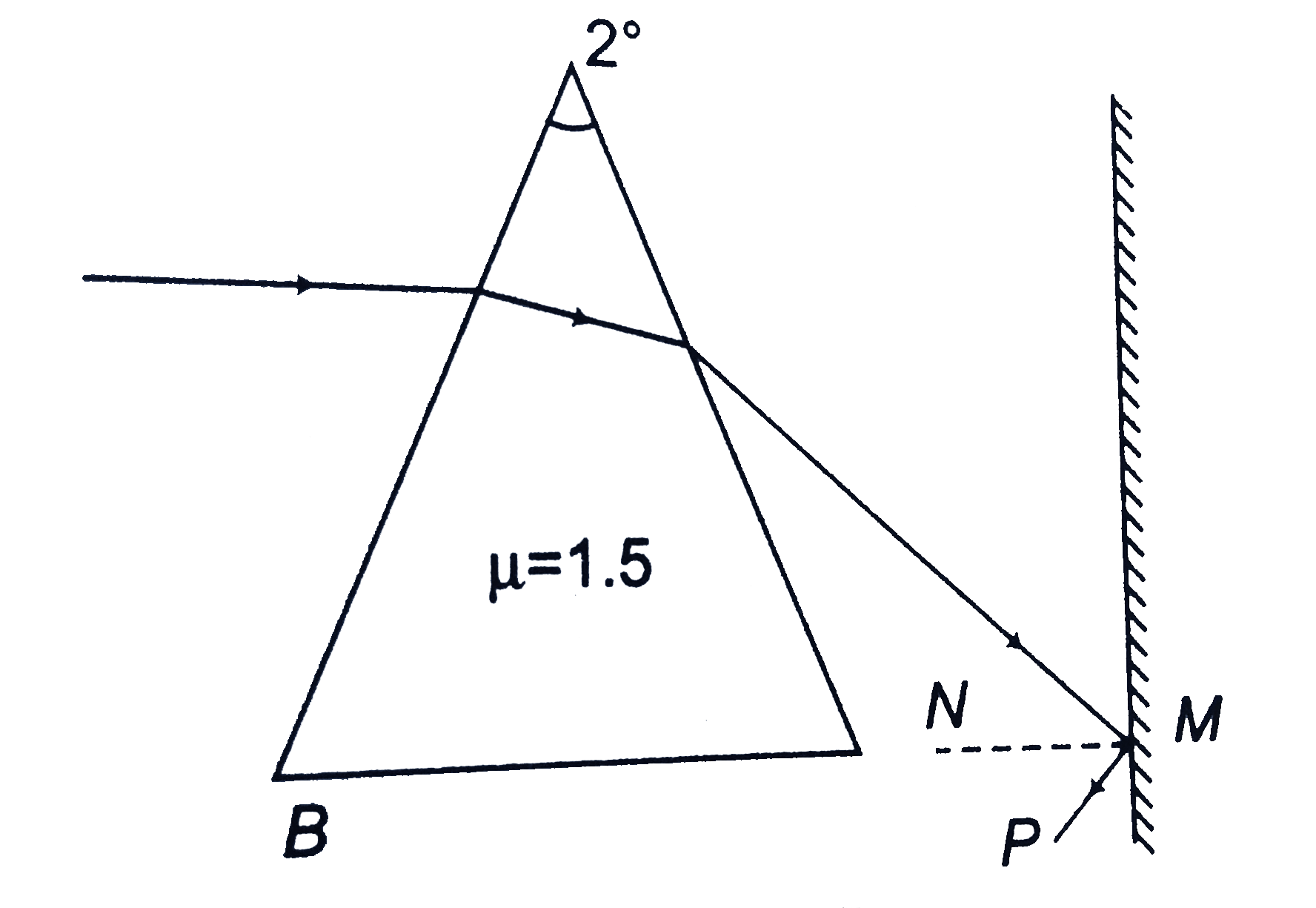
ray of light retraces its path after reflection from M
ray of light MP turns in the direction of MN.
View SolutionGeneral method of finding deviation by prism.
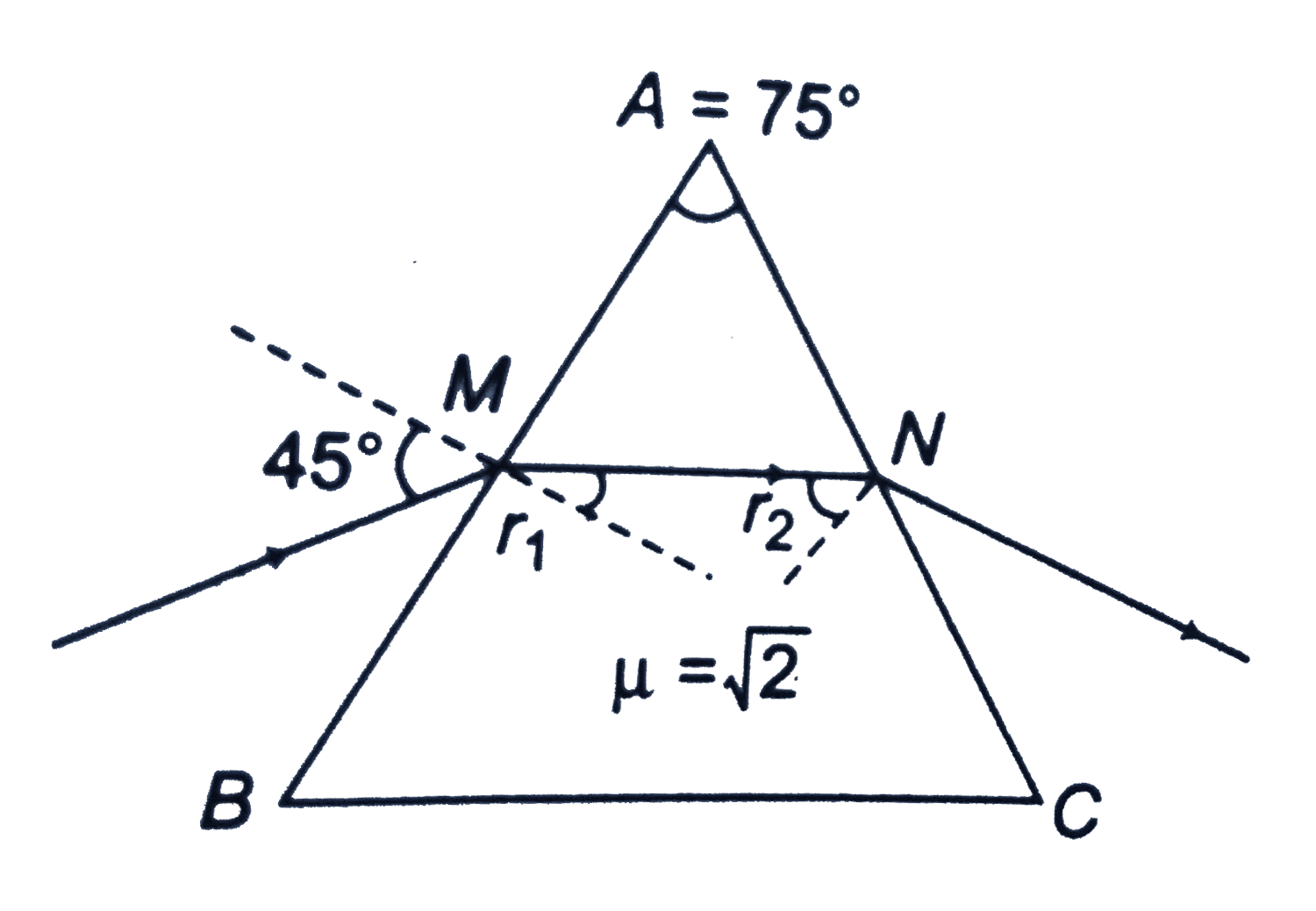
In the ray diagram shown in figure, find total deviation by prism.
View SolutionBased on the condition of no emergence from face AC
In the shown figure,
`A=110^@,B=20^@,C=50^@,i_1=45^@` and `mu=sqrt2`
Find the total deviation by prism.
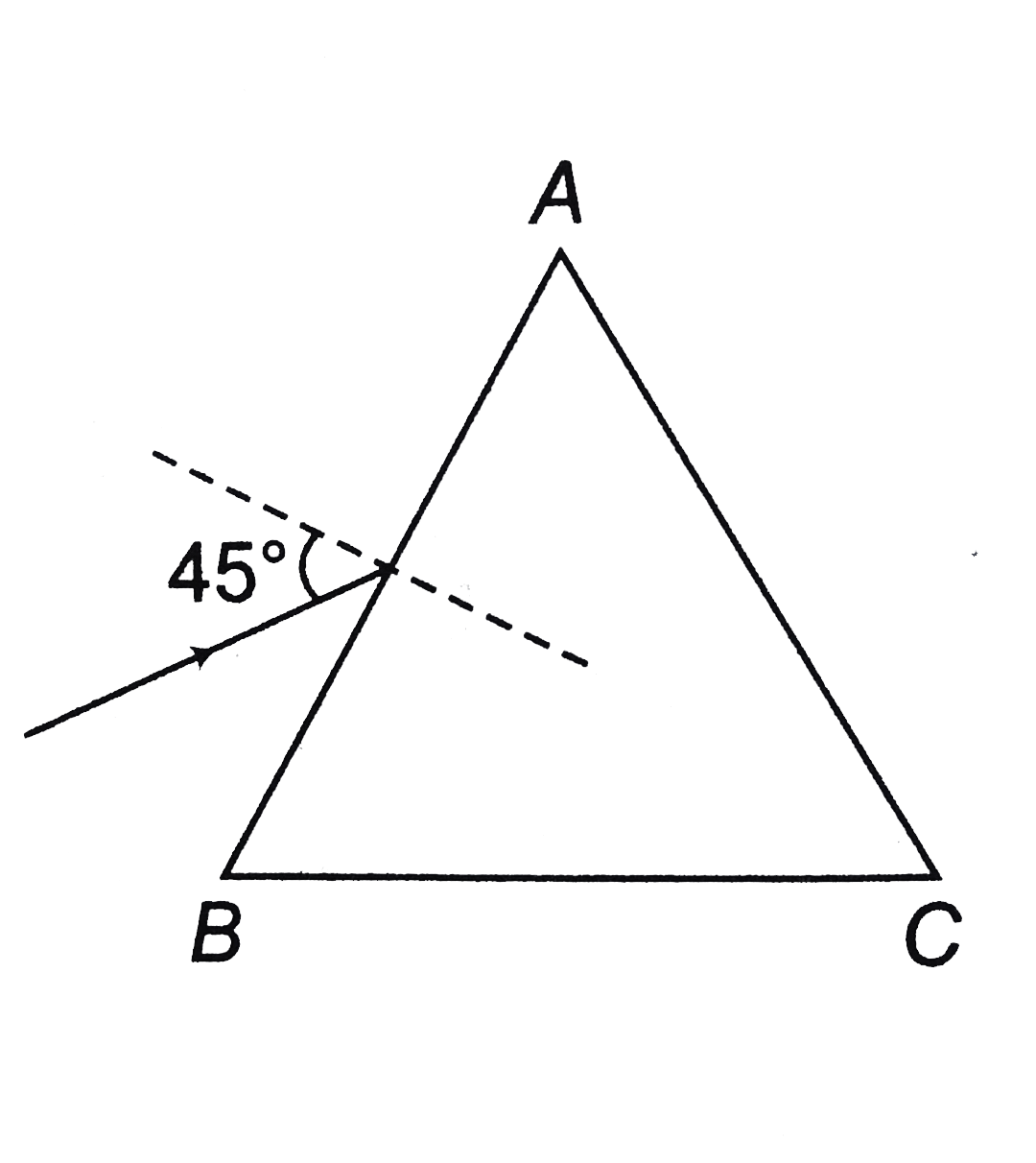
View SolutionTheory
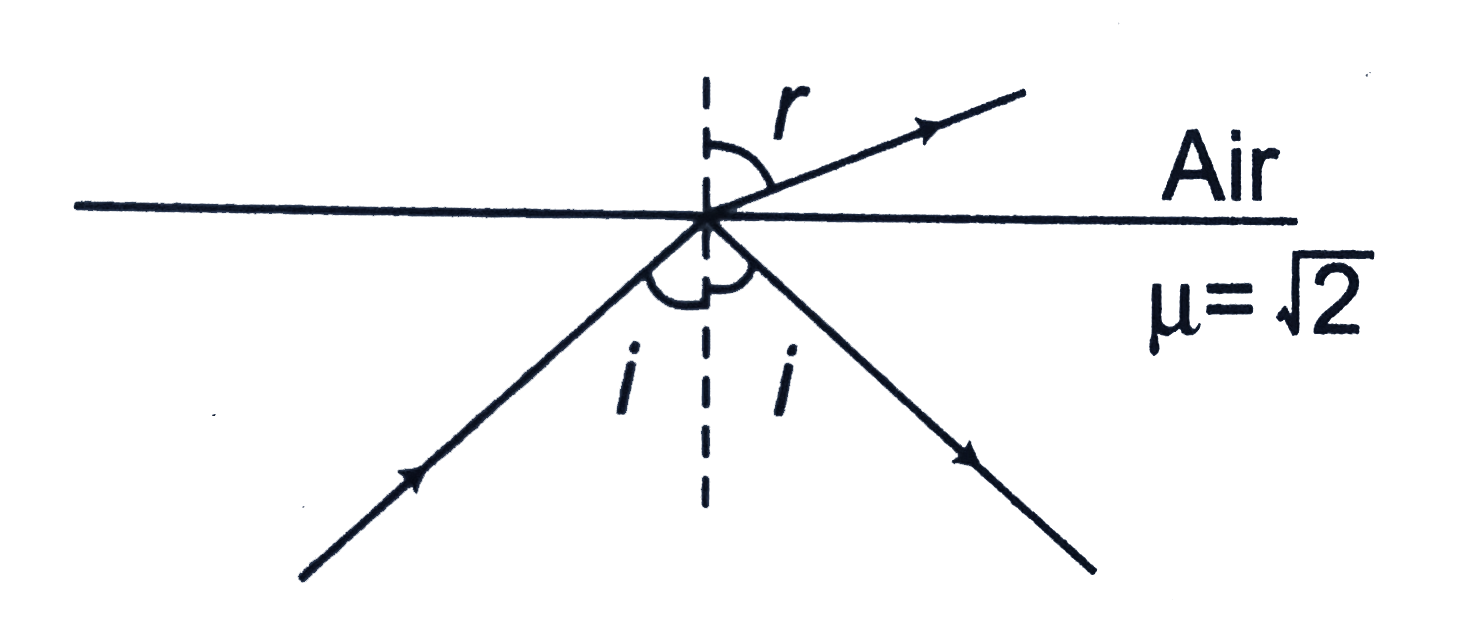
In the figure, i is increased from `0^@ "to" 90^@`. But ray of light is travelling from denser to rarer medium. Therefore, TIR will take place when `igttheta_C`, where `theta_C=sin^-1(1/mu)=sin^-1(1/sqrt2)=45^@`
From `0^@-45^@`, refraction and reflection both will take place. After `45^@`, only reflection will take place.
Question Plot delta verses i graph between incident ray and refracted ray and, for `ile45^@` and with reflected ray for `ige45^@.`
View SolutionAn astronomical telescope has an angular magnification of magnitude `5` for distant object. The separation between the objective and eyepiece is `36cm` and the final image is formed at infinity. Determine the focal length of objective and eyepiece.
View SolutionA telescope has an objective of focal length `50cm` and an eyepiece of focal length `5cm.` The least distance of distinct vision is `25cm.` The telescope is focused for distinct vision on a scale `2m` away from the objective. Calculate (a) magnification produced and (b) separation between objective and eyepiece.
View Solution
Example questions and complete solutions for chapter REFRACTION OF LIGHT of DC PANDEY PHYSICS (HINGLISH) of Class 12
All Exercises from DC PANDEY Class 12 PHYSICS REFRACTION OF LIGHT
- Example
- Example Type 10
- Example Type 11
- Exercise 31.1
- Exercise 31.2
- Exercise 31.4
- Exercise 31.5
- Exercise 31.6
- Exercise 31.7
- Exercise 31.8
- Introductory exercise
- Level 1 Assertion And Reason
- Level 1 Objective
- Level 1 Subjective
- Level 2 Comprehension Based
- Level 2 More Than One Correct
- Level 2 Single Correct
- Level 2 Subjective
- more than one correct option
- Objective Questions
- Single Correct Option
- Solved Example
- Subjective Questions